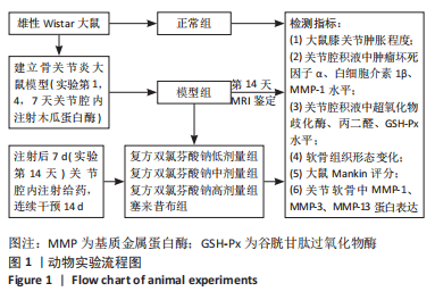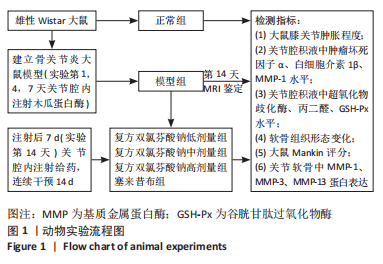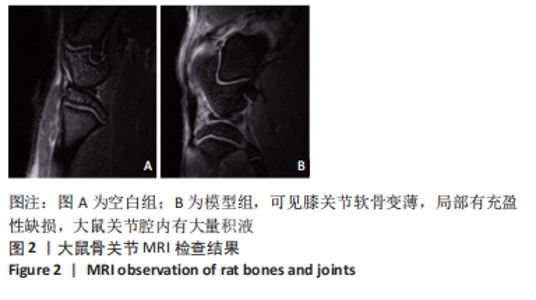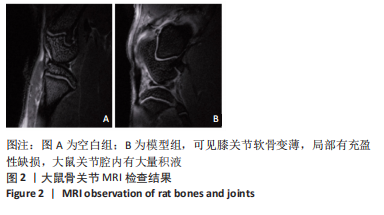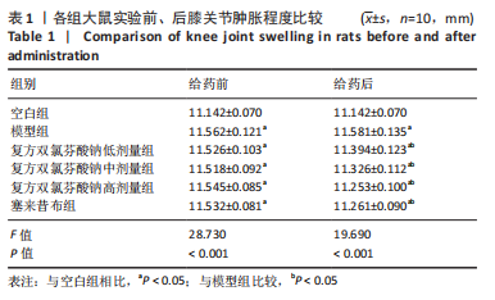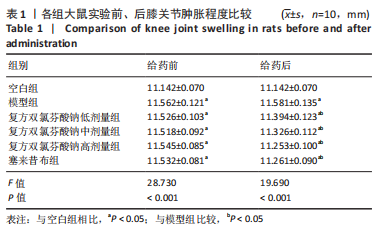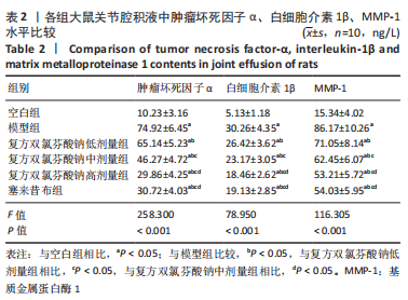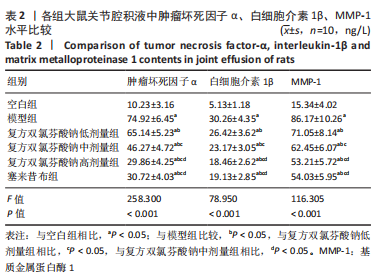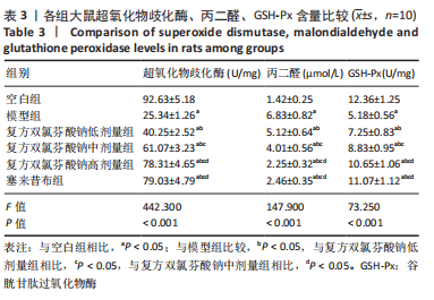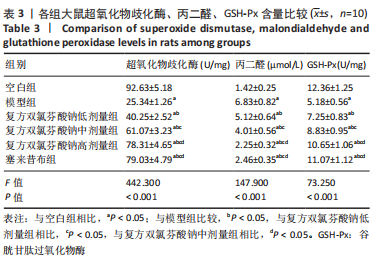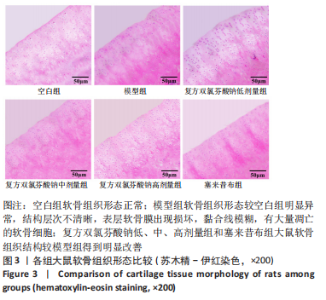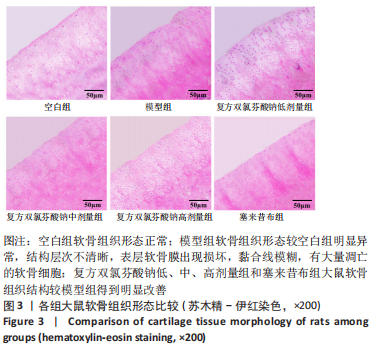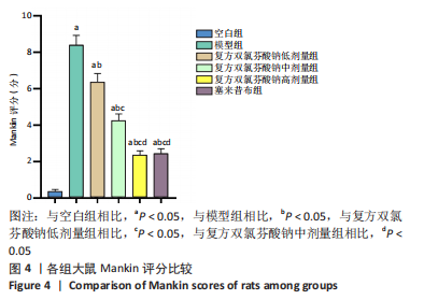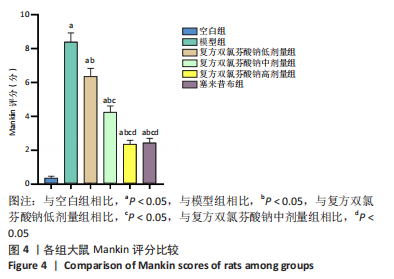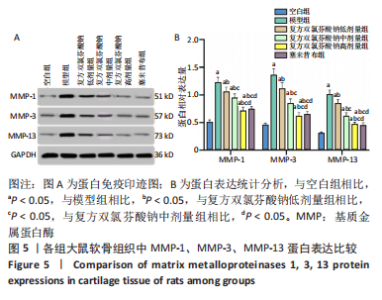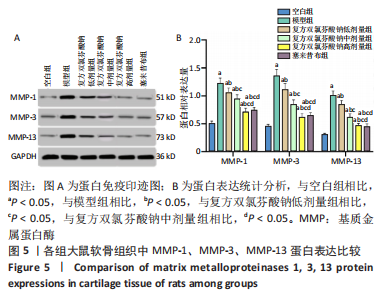[1] HAJ-MIRZAIAN A, MOHAJER B, GUERMAZI A, et al. Kneeling as a risk factor of patellofemoral joint cartilage damage worsening: an exploratory analysis on the Osteoarthritis Initiative. Eur Radiol. 2021; 31(4):2601-2609.
[2] CALLAHAN LF, CLEVELAND RJ, ALLEN KD, et al. Racial/Ethnic, Socioeconomic, and Geographic Disparities in the Epidemiology of Knee and Hip Osteoarthritis. Rheum Dis Clin North Am. 2021;47(1): 1-20.
[3] HE Z, LIU Z, GONG L. Systematic evaluation of sample preparation strategy for GC-MS-based plasma metabolomics and its application in osteoarthritis. Anal Biochem. 2021;621:114153.
[4] 高天慈,刘晓星,刘路,等.鹤膝膏联合双氯芬酸钠缓释片治疗膝骨关节炎临床研究[J].中国药业,2021,30(21):89-92.
[5] 朱在波,毕巧莲,董兵.双氯芬酸钠联合针灸治疗对老年膝关节骨性关节炎患者WOMAC评分、生活质量及炎症因子水平的影响[J].临床与病理杂志,2021,41(7):1604-1609.
[6] WANG LJ, XIANGY, YANG QF, et al. Effects of Tongfengding capsule combined with diclofenac sodium on blood uric acid level and joint swelling and pain score in gout patients. Chinese Journal of Biochemical and Pharmaceuticals. 2017;46(8):101-105.
[7] 余毅, 张婷, 熊逸啸,等. 活血化瘀法对膝骨性关节炎模型兔基质金属蛋白酶的影响[J]. 湖南中医药大学学报,2021,41(7):998-1002.
[8] 杨勇, 陆静芬, 徐军,等. 基质金属蛋白酶3在类风湿关节炎不同活动状态中的临床意义[J]. 中华检验医学杂志,2020,43(4):463-467.
[9] 黄力鹏, 吴春迎, 高宏梁,等. 龙胆苦苷对创伤性骨关节炎大鼠关节软骨的保护作用机制研究[J]. 中国中医急症,2019,28(6):1017-1020.
[10] Xie C, Wang W, Pei J, et al. Effect of otago exercise on falls in patients with osteoarthritis: A protocol for systematic review and meta-analysis. Medicine. 2020;99(50):e23559.
[11] 李晶,陈双涛,张翼飞. 双氯芬酸钠联合氨甲环酸对全膝关节置换术患者失血和疼痛的影响研究[J]. 临床和实验医学杂志,2020, 19(21):2328-2332.
[12] Adeyemi WJ, Olayaki LA. Effects of single or combined administration of salmon calcitonin and omega-3 fatty acids vs. diclofenac sodium in sodium monoiodoacetate-induced knee osteoarthritis in male Wistar rats. J Basic Clin Physiol Pharmacol. 2017;28(6):573-582.
[13] 张君,胡少君,陆安欣,等. LC-MS/MS测定人血浆中对乙酰氨基酚及其人体药动学和生物等效性研究[J]. 中国现代应用药学,2020, 37(21):2625-2632.
[14] 李凤国, 张兰云, 周志洁,等. 关节内注射复方双氯芬酸钠治疗中重度骨关节炎的临床研究[J]. 中国中医骨伤科杂志,2019,27(7):23-26.
[15] 袁发浒, 胡松, 黄丽霞,等. 基于基因芯片的TNF-α诱导骨关节炎细胞模型生物信息学分析[J]. 中国比较医学杂志,2019,29(7):53-60.
[16] 陈波, 郭祥, 钟海波,等. 透明质酸钠对老年膝骨性关节炎患者关节滑液IL-1β的影响及其机制[J]. 中国老年学杂志,2019,39(11): 2705-2707.
[17] 邓星佑, 熊尤龙, 武双艳,等. 辨证取穴针刺法对膝关节骨性关节炎患者血清MMP,IL-1β表达的影响[J]. 辽宁中医杂志,2019,46(5): 1048-1051.
[18] 李良, 孙银娣, 李亚峰,等. 四妙二藤汤联合双氯芬酸钠对类风湿关节炎患者关节情况,炎症指标和复发率的影响[J]. 陕西中医, 2019,40(10):1397-1399.
[19] 冀海军, 张永红. 阳和汤含药血清对膝骨性关节炎兔膝软骨MMP-1,MMP-3和TIMP-1表达的影响[J]. 四川中医,2020,38(3):72-76.
[20] 罗琳,伍光辉,罗寿,等. 风湿祛痛胶囊联合双氯芬酸钠治疗强直性脊柱炎临床研究[J]. 中国药业,2019,28(14):50-52.
|
